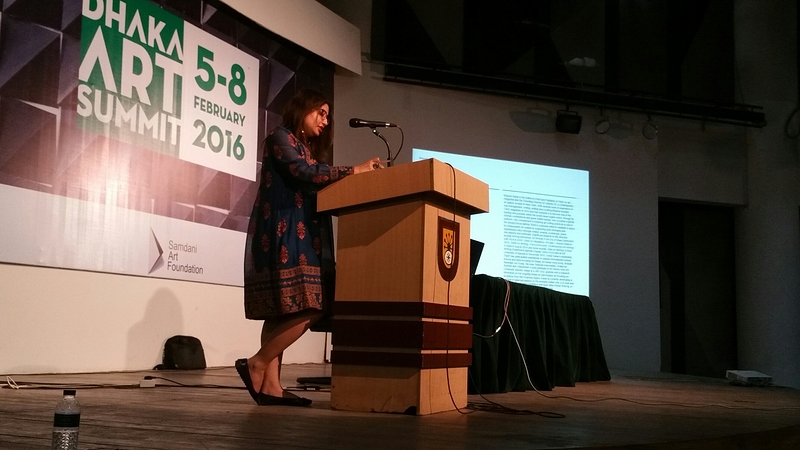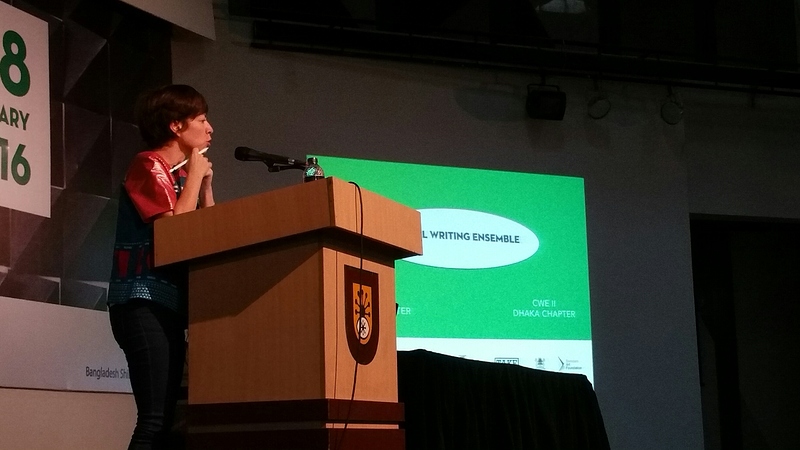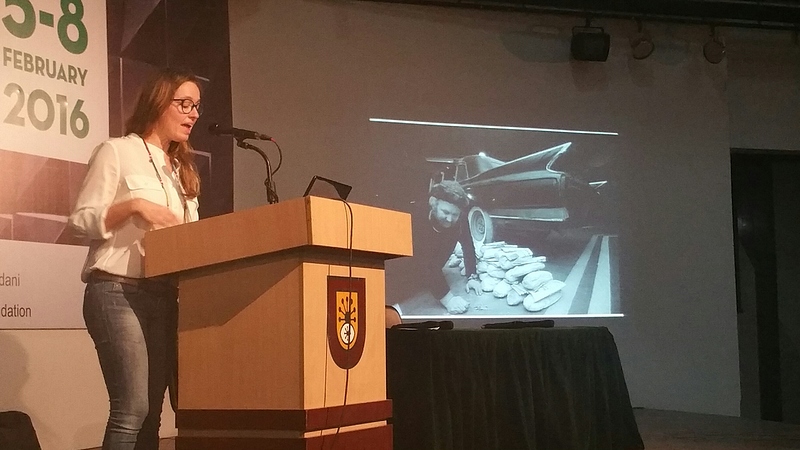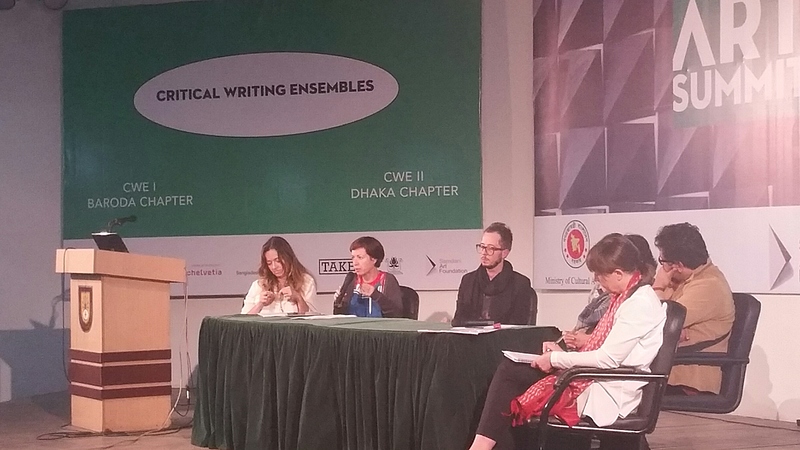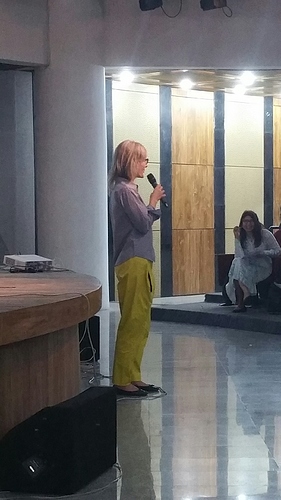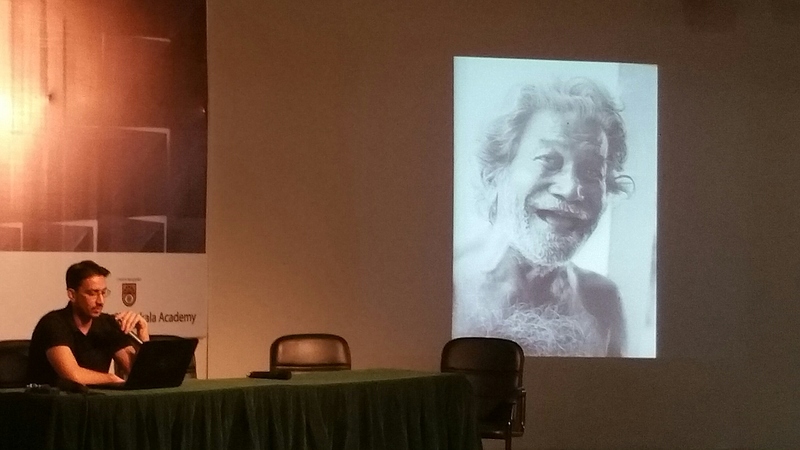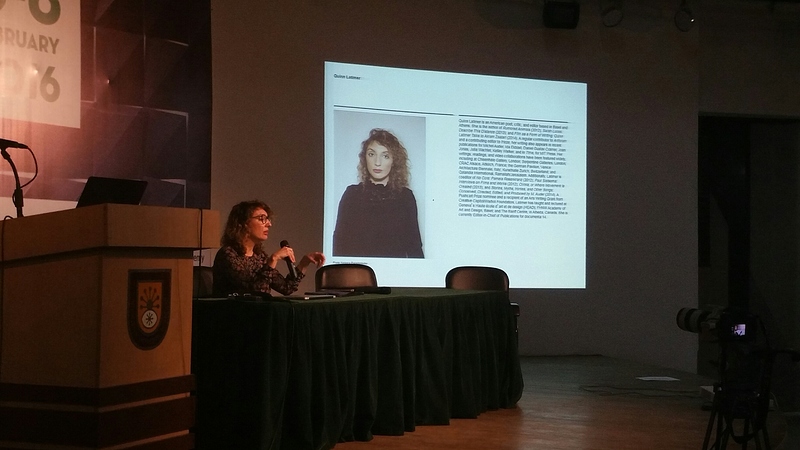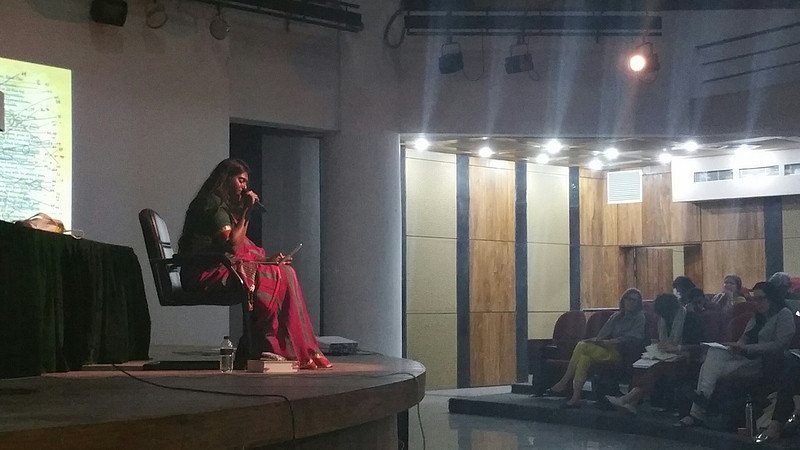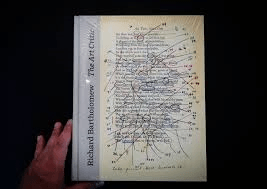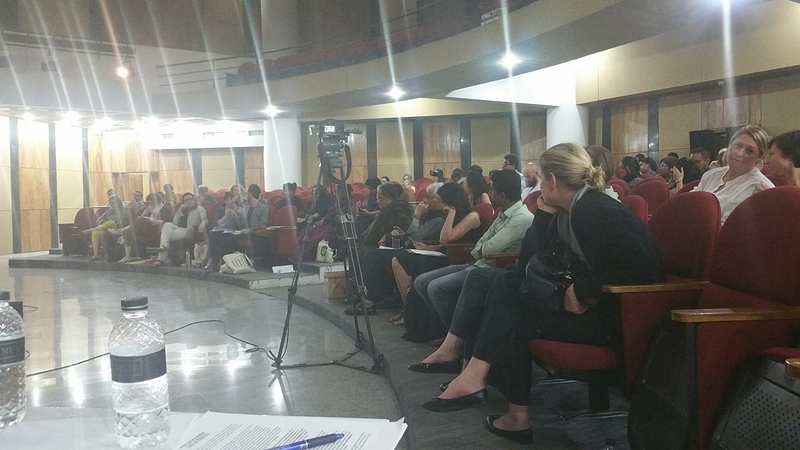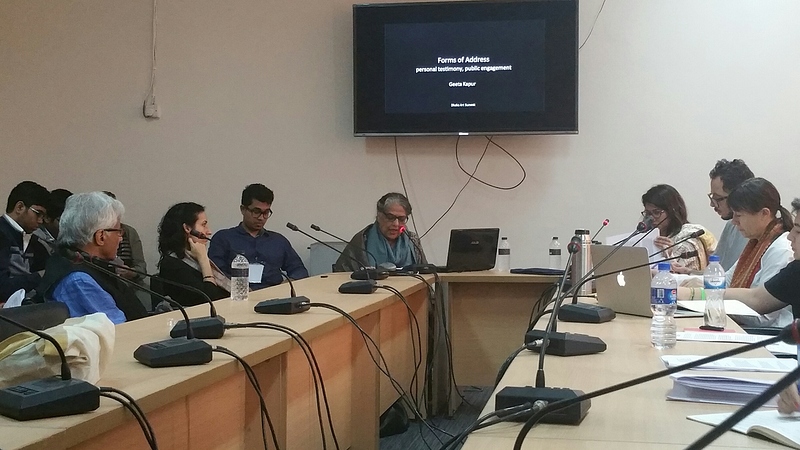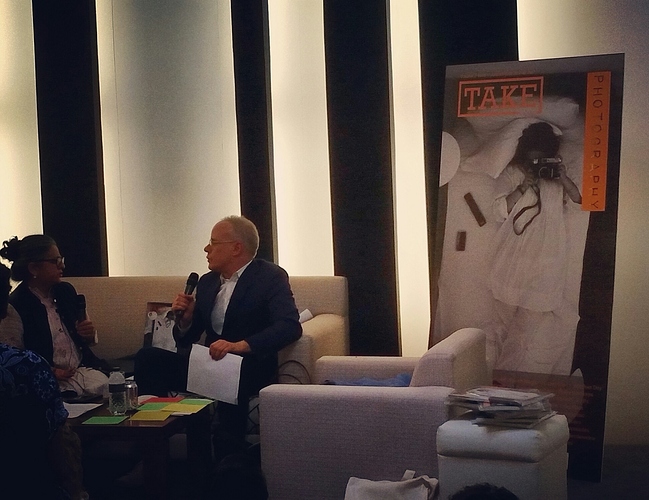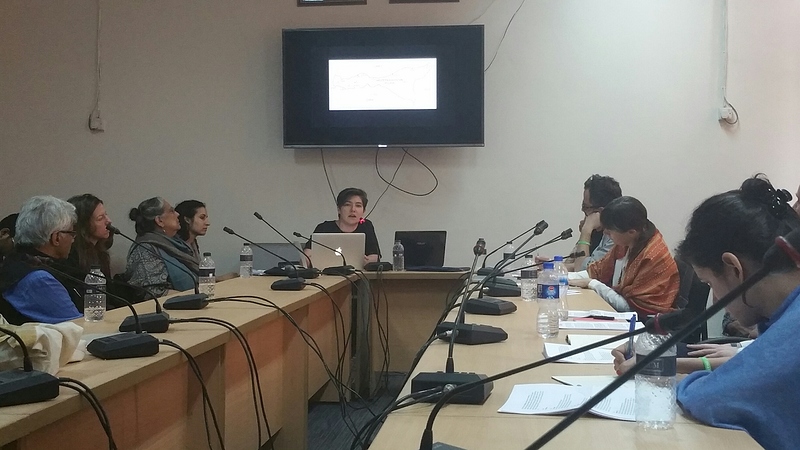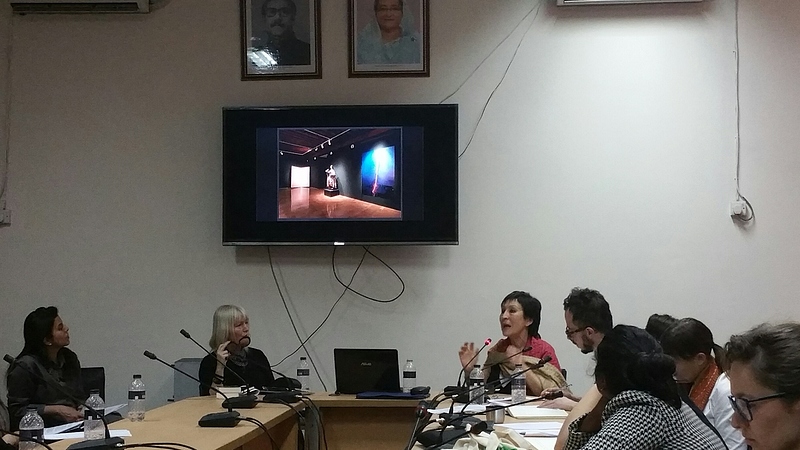e-flux conversations is pleased to present live coverage of the [Dhaka Art Summit’s Critical Writing Ensemble][1] (CWE), a four-day conference on art writing occurring the 3rd, 4th, 7th, and 8th of February. CWE convenes internationally recognized art writers from across the globe, specifically focusing on South Asia, to share writing histories and produce new critical strategies for art writing.
Initiated by Diana Campbell Betancourt, Artistic Director of the Dhaka Art Summit, together with Katya García-Antón, Director and Curator of OCA, Office of Contemporary Art Norway, and Chandrika Grover, Head of Liaison Office India of the Swiss Arts Council Pro Helvetia, the CWE will become a central part of this year’s Dhaka Art Summit 2016.
CWE was curated by Katya García-Antón in collaboration with Antonio Cataldo, Senior Programmer of OCA to maintain a keen focus on the processes and structures that could help to empower writers today. The program takes a cross-regional approach and has been developed in collaboration with Bhavna Kakar, Director of Take on art Magazine in India, who in addition to convening with the peers in Dhaka, developed Critical Writing Ensembles: The Baroda Chapter, at the Maharaja Sayajirao University of Baroda, India in December 2015.
Coming live from the Bangladesh Shilpakala Academy on each day of the Ensembles, Art Critic Emma Sumner (@emma_sumner) will once again take the liveblog helm on behalf of Take on art.
 CWE SCHEDULE 2016
CWE SCHEDULE 2016
Session I: Al Fresco – Writing within and against the Art School
3 February
10.30 Welcome by Diana Campbell Betancourt; Remarks by Marianne Burki and Chandrika Grover; Words by Bhavna Kakar; Presentation of the Ensembles by Katya García-Antó; Introduction of the peers
12.00 Anshuman Das Gupta
12.30 Chus Martínez
14.00 Shukla Sawant
14.30 Filipa Ramos
15.00 Yin Ker
15.30 Discussion moderated by Katya García-Antón and Antonio Cataldo
Session II: Staging Words and Flowing Letters
4 February
10.30 Rabindranath Tagore’s songs being sang by
Masuma Begum Lipi; Bhavna Kakar introduces the peers
11.00 Belinder Dhanoa; To be read by Sabih Ahmed in Belinder’s absence
11.30 Quinn Latimer
12.30 Salima Hashmi
14.00 Nida Ghouse
14.30 Rosalyn D´Mello
15.00 Chantal Pontbriand
15.30 Discussion moderated by Katya García-Antón and Antonio Cataldo
Session III: The Political Unconsciousness of Art Writing
7 February
10.30 Bhavna Kakar introduces the peers
11.00 Geeta Kapur
11.30 Mariam Ghani
12.00 Övül Durmusoglu
14.00 Nabil Ahmed
14.30 Maria Lind
15.00 Rosa Martinez
15.30 Discussion moderated by Katya García-Antón and Antonio Cataldo
Session IV: Entangling and Disentangling Printed Matter
8 February
10.30 Katya García-Antón and Diana Campbell Betancourt welcome peers to the closing session; Bhavna Kakar introduces the peers
11.00 Paul B. Preciado
11.30 Aunohita Mojumdar
12.00 Devika Singh
12.30 Dorothee Richter
14.00 Sharmini Pereira
14.30 Mike Sperlinger
15.00 Mustafa Zaman
15.30 Discussion moderated by Katya García-Antón and Antonio Cataldo
*Image above: Haroon Mirza, ‘The National Apavilion of Then and Now’
[1]: http://www.dhakaartsummit.org/programme/critical-writing-ensemble/

